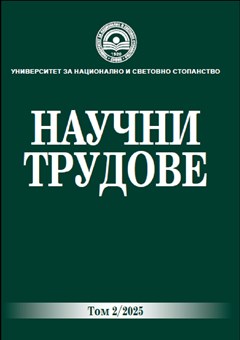Законът на Вагнер – данни от България
Автори: Камелия Асенова, Николай Русев
Wagner’s Law – Evidence from Bulgaria
Kamelia Assenova, Nikolay Rusev
Резюме
Законът на Вагнер е обект на интерес сред икономистите от години. В същността си законът извежда водещата роля на икономическия растеж, като източник на разширяващият се правителствен дял в икономиката. През последните десетилетия интересът към хипотезата на Вагнер се възобновява с развитието на съвременните иконометрични методи, при които наличието на корелационни връзки не е непременно свързано с наличието на причинно-следствена обвързаност. Целта на настоящето изследване е да проучи и потвърди наличието на връзка между съвкупните държавни разходи и икономическият растеж в България. За настоящия текст, възприемаме най-разпространените функционални форми на закона на Вагнер. Така изведените регресионни модели биват тествани за каузалност чрез Engle and Granger (1987) тест за причинно-следственост. Получените OLS коефициенти са близки до единица, но без да я надхвърлят. Коефициентът от едно предполага приблизително еднакъв прираст на променливите в модела. Резултатите от теста за причинно-следственост предполагат наличие на еднопосочна каузалност, чиято посока е от икономическия растеж към държавните разходи, което може да бъде възприето като потвърждение на зависимостта, предложена от Вагнер.
Abstract
Wagner’s law has been an object of interest amongst the economists for years. In its core, the law propagates the leading role of economic growth, which inevitably cause expanding government size. During the last decades the interests to the Wagner’s hypothesis has been reborn due to adopting recent time series econometric methods. In the light of modern time series analyses a correlation does not necessarily implies presence of causality. Thus, the objective of the current study is to examine and validate the relationship between government expenditure (at aggregate level) and economic growth for Bulgaria. We start the research adopting the most popular functional forms of Wagner’s law. Furthermore, we test the OLS models for causal relationship between variables. We do that employing Engle and Granger (1987) procedure as well as Granger causality test. The coefficients of elasticitу we acquire are close to 1 without exceed it. The coefficient of unit elasticity implies that the rate of growth of both variables in the bivariate models is approximately equal. The results from causality tests suggest there is one – directional causality, running from economic grow to government expenditures, which could be accepted as consistent with Wagner’s view.
Keeping account for the fact we are working with aggregate indicators we assume that the elusive direction from government expenditure to GDP is result of the different influences (including the elasticity and transmission channels) the disaggregate expenditures have on the economic growth. As an instance, the most distinct difference could be follow in the nature of the current and capital expenditures which exhibit divergent behavior in relation to the economic growth. So, we adopt the view that although the impact of government spending on GDP is hard to detect on aggregate level, such causality is possible to get on disaggregate level. The last assumption is beyond the scope of the current paper and is an educated proposal for further research.
JEL: H30, H50

